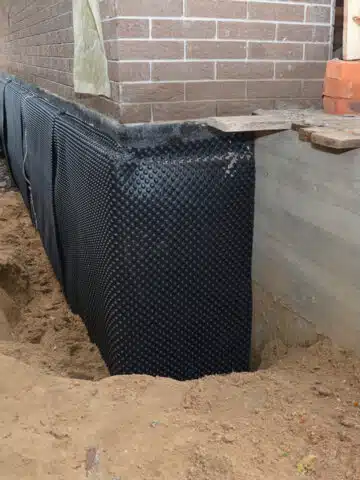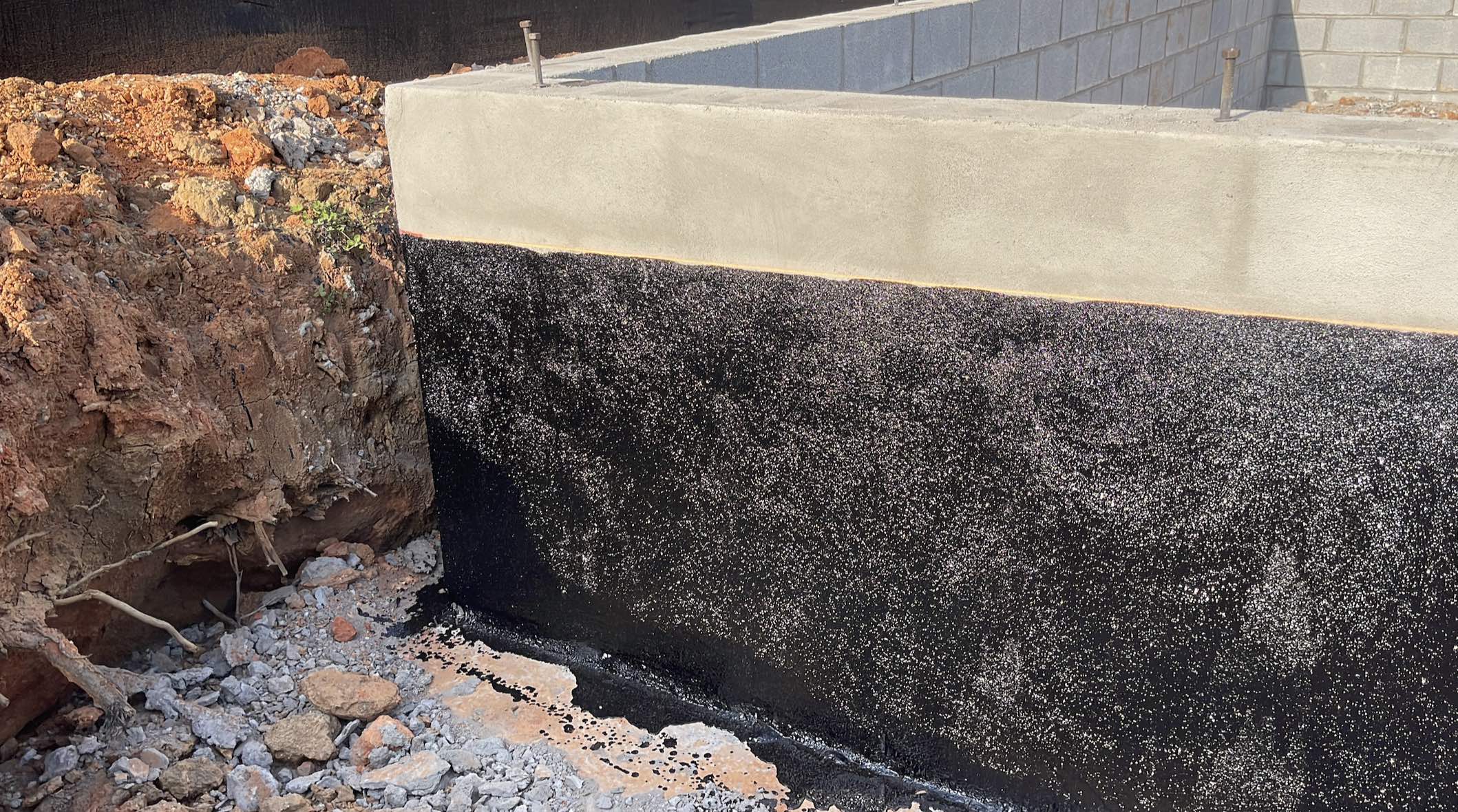The ultimate guide to mould treatment newcastle: Process from start to finish
The ultimate guide to mould treatment newcastle: Process from start to finish
Blog Article
Discovering the Different Strategies and Solutions for Effective Damp Proofing
Moisture in buildings poses considerable obstacles to both architectural integrity and interior air top quality. Different methods and options have emerged to fight this prevalent concern. From typical damp-proof membrane layers to cutting-edge chemical therapies, each technique provides special benefits. Understanding these alternatives is vital for efficient dampness control. Picking the best remedy depends on certain structure conditions and needs, prompting more exploration right into the most efficient wet proofing methods available.
Understanding the Root Causes Of Wetness
Moisture can arise from various sources, comprehending these causes is important for reliable remediation. Typically, dampness stems from 3 key sources: climbing damp, penetrating moist, and condensation. Increasing wet happens when groundwater takes a trip up-wards via porous materials, such as brick or stone, frequently as a result of a lack of an effective obstacle (mould treatment newcastle). Passing through wet is normally triggered by exterior elements, including roofing system leakages, faulty gutters, or harmed walls, permitting water to infiltrate a residential property. Condensation, on the various other hand, results from excess moisture airborne, often intensified by inadequate ventilation and temperature differences, causing water droplets developing on surfaces. Recognizing these underlying problems is crucial, as each sort of dampness calls for a tailored strategy for remediation. Proper assessment aids in identifying the most reliable options, eventually protecting the architectural honesty of a structure and enhancing interior air top quality
Traditional Damp-Proof Membranes

Chemical Damp-Proofing Solutions
Chemical damp-proofing services offer a cutting-edge method to stopping moisture breach in buildings. These techniques usually involve the application of liquid chemicals that penetrate stonework and create a barrier versus increasing wet. Frequently used chemicals include silanes, siloxanes, and other water-repellent representatives that react with surface area products to develop a hydrophobic layer.The application procedure normally calls for drilling holes right into the wall surfaces, infusing the chemical service, and allowing it to treat. This technique is especially beneficial for older structures where traditional damp-proof membrane layers might be impractical. Additionally, chemical damp-proofing can be less disruptive and more cost-effective than substantial restoration projects.While efficient, these solutions depend on proper application and ecological conditions for peak efficiency. Normal upkeep and monitoring are crucial to guarantee the durability of the damp-proofing therapy. On the whole, chemical damp-proofing represents a flexible option for protecting buildings against moisture-related damage
Tooth Cavity Wall Construction Strategies
Cavity wall surface construction strategies offer countless advantages, especially in wetness control and power performance. By incorporating an air space in between two layers of stonework, these walls effectively mitigate water ingress while improving insulation. This mix not only shields structures from wetness however likewise adds to minimized energy intake.
Advantages of Tooth Cavity Walls
When taking into consideration reliable wet proofing methods, the benefits of dental caries walls stand apart prominently. Tooth cavity wall surfaces contain two different layers, creating an air gap that effectively minimizes wetness infiltration. This style minimizes the danger of wetness, as the outer wall surface acts as a barrier against rain and water ingress. Additionally, dental caries wall surfaces boost thermal insulation, which adds to energy performance by reducing warmth loss. They likewise provide sound insulation, aiding to create a quieter interior atmosphere. The air gap permits for air flow, which aids in wetness control and minimizes the chance of mold and mildew growth. These advantages not just enhance the general convenience of a structure but additionally contribute to its longevity and structural stability.
Wetness Control Methods
Efficient dampness control techniques are critical in tooth cavity wall construction to guarantee long-term defense against moisture. One main method entails the incorporation of weep openings, which promote water drainage from the tooth cavity, avoiding build-up. Additionally, making use of breathable membrane layers can assist handle moisture levels while enabling caught vapor to leave. Appropriate positioning of insulation is likewise critical, as it needs to not block drainage courses. In addition, making sure that the outer leaves of the dental caries wall are created with water-resistant products boosts general toughness. Routine upkeep checks are important to identify any kind of blockages or damage early, protecting the structure's integrity. Ultimately, a mix of these techniques develops a durable defense versus dampness intrusion in dental caries walls.
Insulation and Power Performance
Insulation plays a vital duty in boosting power effectiveness within tooth cavity wall surface building and construction. By including shielding materials, these wall surfaces create a thermal barrier that decreases heat loss and lowers energy intake. Efficient insulation not only helps preserve a stable indoor temperature yet likewise mitigates the risk of moisture, as it avoids condensation within the wall surface dental caries. Different methods, such as making use of inflexible foam boards or mineral woollen, can be employed to attain excellent insulation performance. In addition, proper installation is important to guarantee that gaps and spaces are minimized, which can or else jeopardize power effectiveness. Eventually, a well-insulated cavity wall surface adds considerably to overall sustainability and lowers home heating and air conditioning prices for home owners.
External Damp Proofing Techniques
Exterior moist proofing techniques are important for securing frameworks from dampness seepage. Two reliable techniques include the application of water-proof membrane layers and the installation of French drains pipes. These services aid reduce water accumulation and maintain the stability of buildings.
Waterproof Membrane Application
While numerous techniques exist for protecting against moisture access, the application of waterproof membrane layers stays a very reliable external wet proofing technique. These membrane layers are commonly made from products such as polyethylene, rubber, or changed asphalt, check here supplying a robust obstacle against water infiltration. The installment process includes applying the membrane to the outside surfaces of foundations or wall surfaces, ensuring complete coverage to avoid leaks. Appropriate attachment and securing at joints are important to optimizing effectiveness. Waterproof membrane layers can be applied in numerous kinds, consisting of fluid finishes and sheet membranes, enabling flexibility based upon the certain requirements of the framework. This method not only secures structures from dampness however additionally boosts their durability and architectural stability.
French Drain Installment
One effective technique for managing groundwater and avoiding dampness build-up around a structure's foundation is the setup of a French drainpipe. This water drainage system includes a trench filled with crushed rock and a perforated pipeline that reroutes surface water away from the foundation. Proper setup requires mindful planning, making certain that the drainpipe slopes far from the framework to help with ideal water flow. Additionally, the location of the drain is essential; it must be positioned in locations prone to pooling or excess dampness. Regular maintenance, including clearing up particles from the gravel and ensuring the pipe stays unhampered, is vital for long-lasting effectiveness. Inevitably, a well-installed French drain can significantly decrease the threat of water-related concerns in cellars and foundations.
Inside Waterproofing Strategies
Interior waterproofing techniques are vital for safeguarding a structure's inside from moisture seepage and prospective water damage. These strategies generally include the application of specialized products and techniques designed to develop a wetness obstacle within the structure. One common approach is using water resistant finishes or sealers on wall surfaces and floorings, which avoid wetness from penetrating surfaces.Additionally, setting up interior drain systems, such as sump pumps, can efficiently take care of water accumulation in basements and crawl areas. Another method includes using vapor barriers, which are installed to hinder wetness movement from the ground right into living spaces.Moreover, dealing with any cracks or voids in walls or foundations with suitable sealers guarantees a comprehensive protection versus water breach. By carrying out these indoor waterproofing methods, homeowner can substantially decrease the danger of mold and mildew growth, architectural damages, and other moisture-related problems. Appropriate implementation of these techniques is important for long-lasting protection and building stability.
Routine Upkeep and Assessment Practices
Normal upkeep and assessment techniques are vital for guaranteeing the long-lasting performance of moist proofing remedies in any type of structure. Routine checks enable residential property owners to recognize early indications of moisture intrusion, such as peeling paint, mold growth, and mildewy smells. These indicators can indicate underlying problems that require prompt attention.Inspections need to be carried out a minimum of every year, concentrating on prone locations like basements, crawl rooms, and outside walls. Throughout these evaluations, building owners should take a look at sealants, drainage systems, and ventilation to validate they function correctly.Additionally, maintaining downspouts and seamless gutters is essential, as clogged up systems can cause water buildup near the structure. Implementing a normal upkeep schedule, together with prompt repairs, can substantially extend the life expectancy of wet proofing steps and shield the structural honesty of the structure. Aggressive actions inevitably add to the total wellness and safety of the living setting.
Often Asked Inquiries
How Much Time Does Damp Proofing Generally Last?
The period of damp proofing effectiveness varies, usually lasting between 20 to half a century. Factors such as application top quality, environmental problems, and maintenance techniques significantly influence the long life of the damp proofing therapy.

Can I Damp Evidence My Home Myself?
The private pondered the feasibility of DIY damp proofing. With correct research and the ideal materials, it is possible. They likewise acknowledged the importance of expert assistance to guarantee durable performance and protect against future problems.
What Are the Indications of Ineffective Damp Proofing?
Signs of ineffective damp proofing consist of consistent moldy smells, visible mold development, peeling off paint, moist spots on wall surfaces, and wood decay - damp proofing newcastle. Property owners ought to address these concerns without delay to stop additional damages and health and wellness worries
Does Damp Proofing Affect Indoor Air Quality?

Exactly How Much Does Specialist Damp Proofing Cost?
Expert moist proofing prices differ substantially, commonly varying from $1,000 to $5,000 depending upon the property's size, the level of the damp issue, and picked techniques. Each scenario requires a tailored evaluation for precise pricing. Frequently, dampness originates from three primary sources: climbing wet, passing through damp, and condensation. When thinking about efficient damp proofing methods, the benefits of tooth cavity walls stand out prominently. Exterior wet proofing methods are important for shielding structures from wetness infiltration. While different techniques exist for avoiding dampness access, the application of water-proof membranes continues to be an extremely effective exterior wet proofing technique. Signs of ineffective moist proofing include consistent moldy smells, visible mold development, peeling paint, wet spots on wall surfaces, and wood degeneration.
Report this page